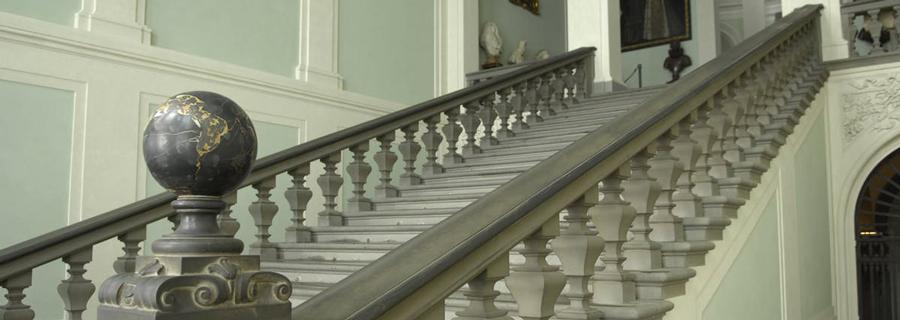
When you visit Florence, you can often see grey marble inside Renaissance churches or palaces and you’ll surely find it very elegant and beautiful.
The so-called grey “marble” isn’t actually a marble but a sandstone from Tuscan quarries, named Pietra Serena. The Renaissance period in Florence was characterised by this material, it was often used by famous architects and sculptors, such as Brunelleschi and Donatello, to decorate many of the buildings in the provincial capital.
The cities Siena and Arezzo are also very important, but don’t forget to visit the famous museum “Uffizi”, where you can admire Vasari’s splendid staircase, and the elegant pillars inside the Basilica San Lorenzo, during your stay in Florence. It‘s worth visiting Michelangelo’s stairs in the adjacent library Medicea Laurenziana, too. As already said, Pietra Serena is not a marble, but a sediment stone, created by deposit of sand layers throughout geological time. The natural stone is grey coloured with big or medium seized grains. It has got a pretty homogenous and compact surface with glittering dots or rather mica crystals.
Both the Etruscans and the Ancient Romans used this natural stone, but it was a popular building material even in the Middle Ages and especially in the Renaissance Period. If you choose Pietra Serena for your house, you’ll bring a part of history into your home. The outdoor use is not recommended, since the stone is not weatherproof or frost-resistant and over time, frost will brittle the stone. On the other hand, there are many indoor solutions and the history of architecture has already shown that staircases of Pietra Serena are very elegant and beautiful. The stone is also suitable for pavements, pillories and decorative trims or can be used as a furnishing element. Thanks to the delicate colour, Pietra Serena fits for any furnishing style.
In Florence, during the sixteenth century, this natural stone often served to contrast the white coloured walls, frames and stucco. Besides the already mentioned buildings, you’ll find this material in the well-known church Ognissanti in Florence. Even today, the indoor use of Pietra Serena is highly recommended, if you want to create a sophisticated and elegantly furnished home.
